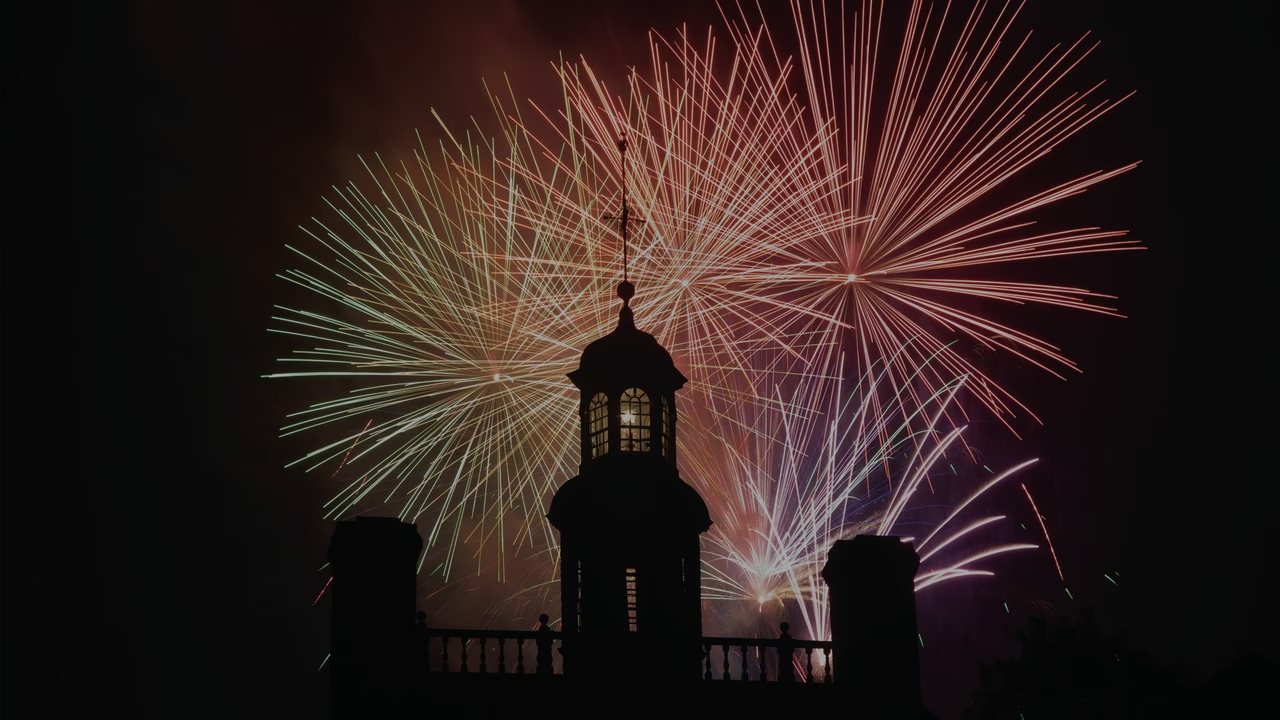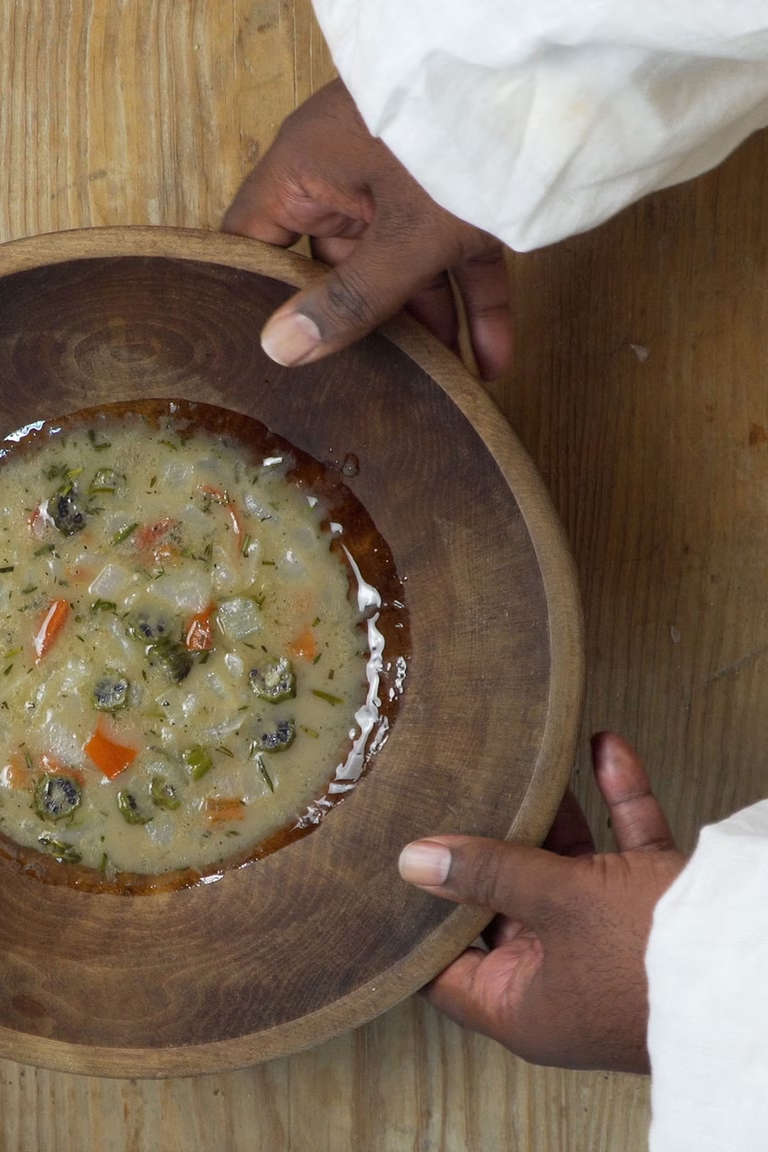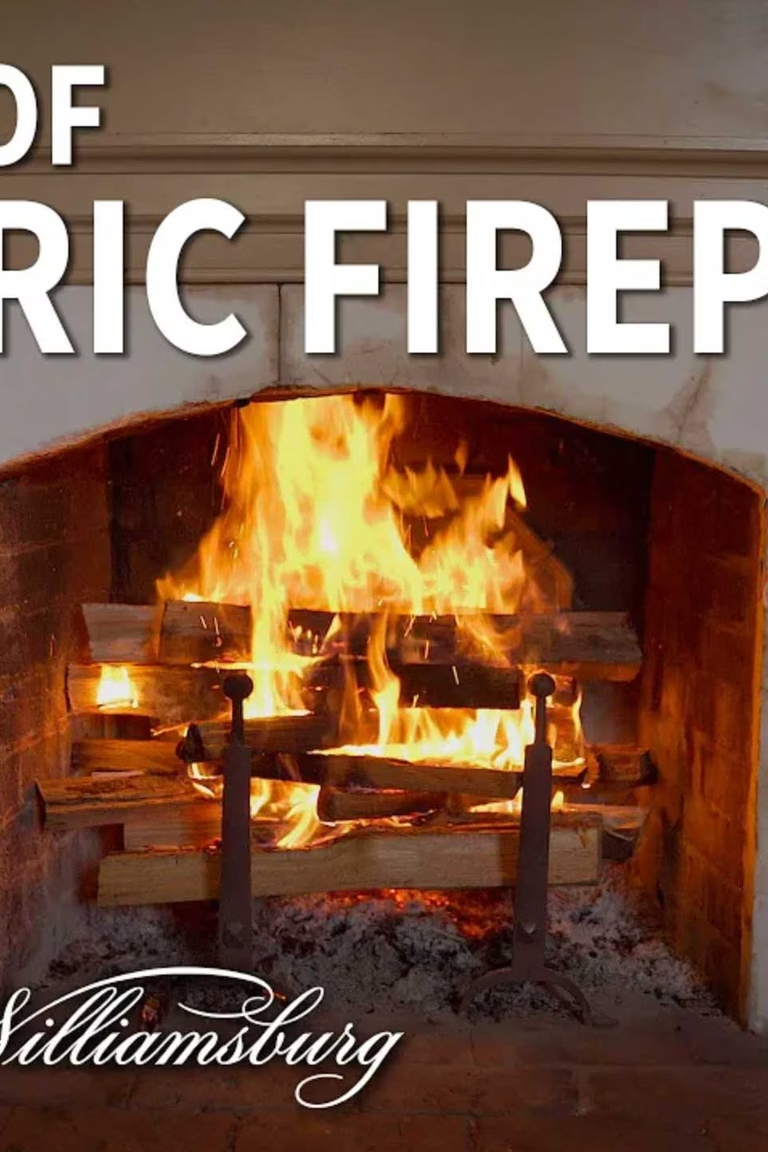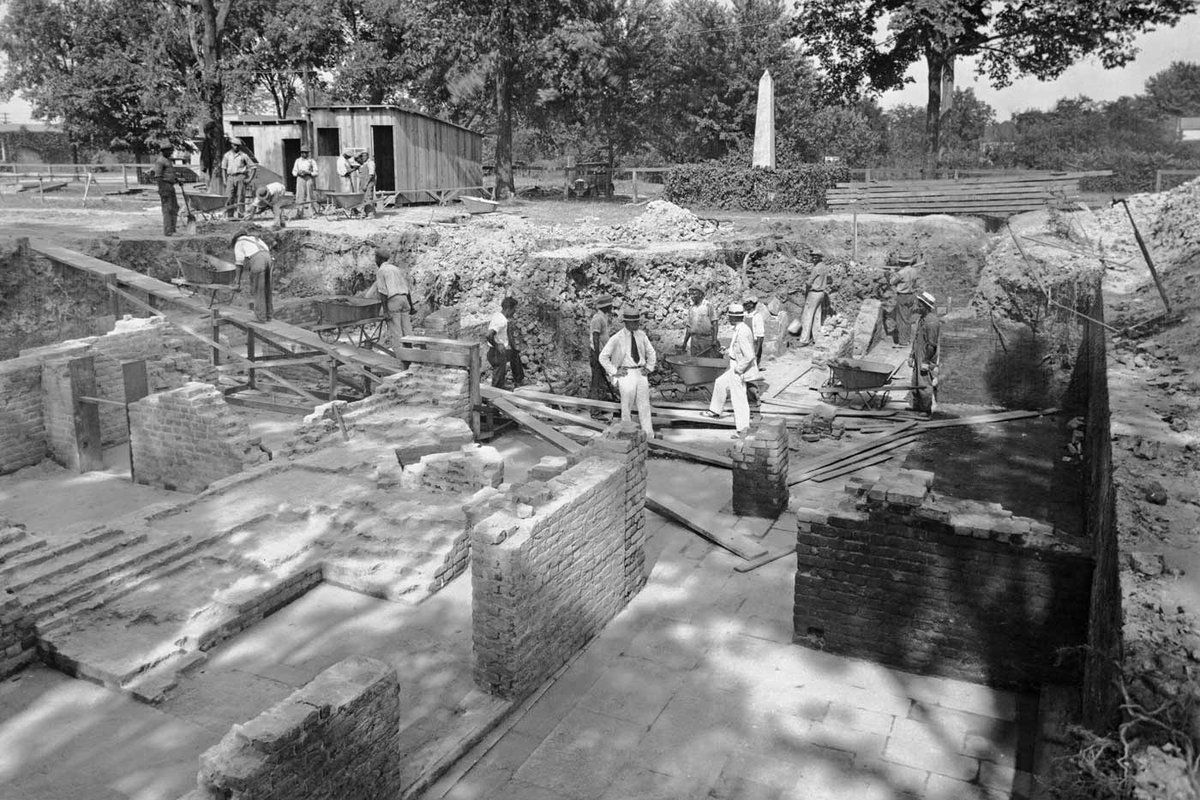
Research Spotlight: Finding Colonial Williamsburg's Black Archaeologists
Black and white photographs documenting the early restoration are stacked in the Colonial Williamsburg John D. Rockefeller Jr. Library’s Visual Resources Collection. When they include people, these images are infinitely more interesting.
In this image of the Governor’s Palace cellar, under excavation in 1930, two men in light-colored suits pose in the center, impractically dressed for the occasion, and looking out of place. This dapper duo likely includes Prentice Duell, an Egyptologist borrowed from the Sakkarah Expedition, and either John Etheridge (the site foreman), or Herbert Ragland (the project’s field supervisor). Their names can be found in the final archaeological report, produced to summarize the project and its findings.
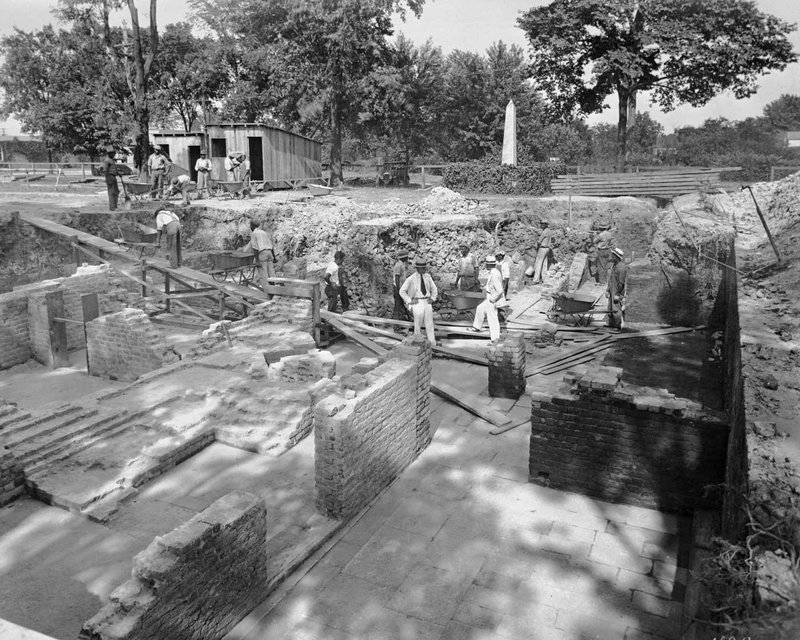
The Palace Excavation, 1930. (Visual Resources Collection, John D. Rockefeller Jr. Library, Colonial Williamsburg)
This image includes 16 additional men—Black excavators—whose identities are less clear. Unlike the center figures, they have not stopped to be photographed. Many are in motion, pushing wheelbarrows full of brick rubble. Daily work logs reference them only in the collective: “27 men” worked on July 18; “46 men” on August 1. Their names are not recorded.
The Palace project is not unique in this regard. Images in the Foundation’s collection reveal that between 1928 and the mid-1960s, the excavation of eighteenth-century Williamsburg fell primarily to Black men. Hired as general laborers, they systematically recovered hundreds of brick foundations, enabling the reconstruction of houses, shops, and outbuildings. Some of them continued in this work for decades, making the transition from early trenching techniques to the careful stratigraphic excavation implemented around 1960. In images, a distinctive chin, a favorite field hat, or a penchant for wearing suspenders make a few of these men familiar, but we have no names.
A few sources of information offer clues—The Colonial Williamsburg News, and the Foundation’s corporate archives, among them—but the most complete and vivid stories have come from two interviews with early Black excavators themselves. Linwood Williams and James Christian were interviewed by archaeologist Andrea Foster in the early 1980s as part of an oral history project. The deteriorating cassette tapes on which those stories were captured were rediscovered by Dr. Ywone Edwards Ingram around 2010, and converted to digital file format. But it was not until William and Mary undergraduate Eleanor Renshaw transcribed the interviews in 2020 that the experiences of Linwood Williams and James Christian became accessible.
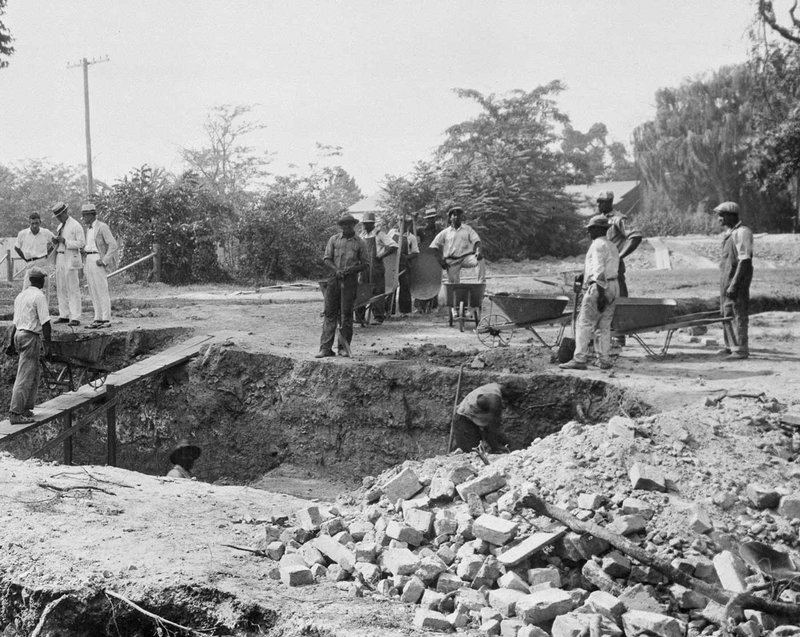
Detail of 1930 excavation at the Palace. This grouping likely includes Linwood Williams. (Visual Resources Collection, John D. Rockefeller Jr. Library, Colonial Williamsburg)
Linwood Williams is undoubtedly among the men depicted in the Palace images. He began working for the restoration in 1928 as an employee of Todd & Brown, the contracting company that oversaw early excavation. Williams participated in excavations at the Capitol, the Wren Building, the Wythe House yard, and a property he refers to as the Prentis Store, but which we know today as the Archibald Blair Storehouse. The Palace project fueled Williams’ most detailed memories. He recalled excavating the Revolutionary War burial ground, and re-establishing the Palace canal which, by 1930, was a swamp. More than 50 years later, he was able to provide names of those he dug alongside: Charlie Banks, Paul Walker, and his brothers, Eddie and Wallace Williams.
Like many early excavators, Williams’ job classification was as a “laborer,” a position defined by tremendous fluidity. During the museum’s earliest years, an emphasis on finding brick foundations required most “laborers” to be assigned to excavation tasks. As the pace of discovery slowed, excavators were reassigned to construction crews, and later, to gardening and landscaping duties. Linwood Williams’ 50-year career followed this trajectory. Hired in 1928 as a “foundation digger” (his words), he retired in 1978 after 34 years as a gardener. He was proud of having planted the trees in the Capitol yard, as well as those surrounding the Williamsburg Inn.
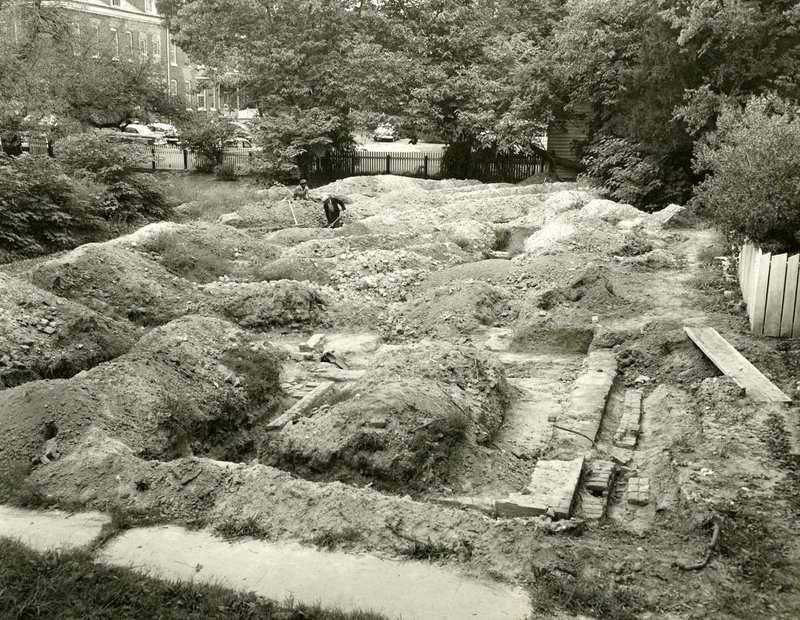
Trenching at the First Baptist Church Site, 1957. James Christian is believed to be the closer figure. (Visual Resources Collection, John D. Rockefeller Jr. Library, Colonial Williamsburg)
James Christian began working for Colonial Williamsburg around 1950—nearly a generation after Williams. In his interview, he was more guarded. While he offered fewer detailed memories of the excavations in which he participated, James Christian recalled that he worked on the site of the First Baptist Church in 1957. It was a watershed year for Archaeology. In 1957 the arrival of Ivor Noel Hume as the first Director of Archaeology would spell new goals and methods for the excavation program. The architectural trenching technique in which Christian had become proficient would soon be abandoned. James Christian was one of the last excavators to work for “Jimmy” Knight, an architectural draftsman whose name has been inextricably linked to the trenches he employed. Like Linwood Williams, James Christian had a long career at Colonial Williamsburg, gathering experiences in the areas of building maintenance and construction. He referred to his time as an excavator as “the good old days,” and was especially appreciative of co-workers “Old Man Gray,” and “Manuel” both from Lackey, and “Charlie from Grove.”
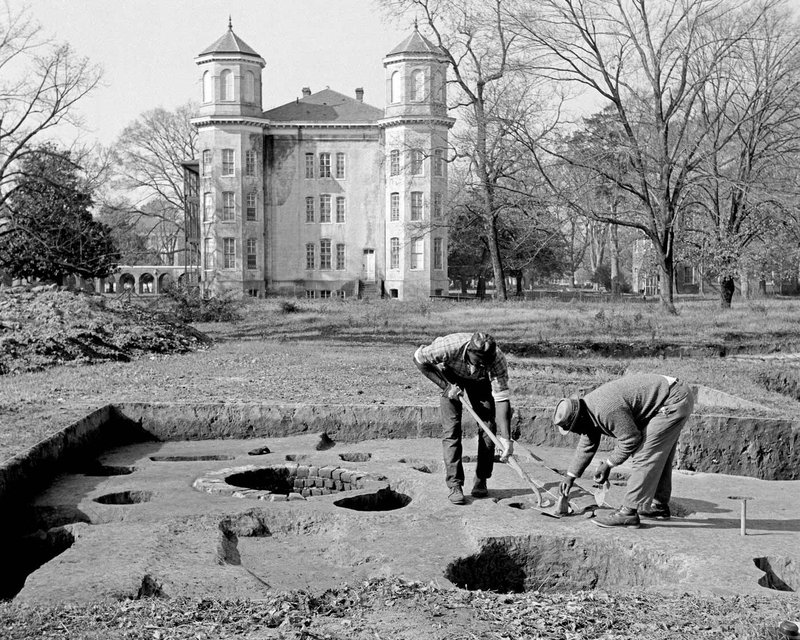
Daniel Louden and Thomas Banks at the Custis Square site (1964). (Visual Resources Collection, John D. Rockefeller Jr. Library, Colonial Williamsburg)
The names and accomplishments of other remarkable individuals have been pieced together from scattered records. Daniel Louden, hired in 1948, was described as one of Ivor Noël Hume’s “most valuable excavators.” Identifiable by his distinctive field hat, Louden appears frequently in archaeological images from the 1960s and early 1970s, including those documenting the excavation of Wetherburn’s Tavern, the Geddy foundry, and the 1964 excavation at Custis Square. Louden successfully navigated the transition from trenching to stratigraphic excavation, the latter a skill he honed despite annual seasonal furloughs to the Landscaping Department. In 1972, he marked 25 years of service with Colonial Williamsburg. Daniel Louden was identified as a gardener when he retired in 1975.
Thomas Banks was hired in 1960, and often appears in images alongside Daniel Louden. In 1971, Banks was made an Archaeological Foreman, but along the way, held positions as a kitchen helper, gardener, laborer, janitor, and an archaeological excavator.
There were innovators among these early archaeologists. During the winter of 1960, excavation in the streambed at the Hay Cabinetmaker Shop was made slightly less miserable by Paul Ellis’s suggested use of a motorized conveyor belt to move mud uphill, and away from the excavation. The Suggestions Committee gave Ellis an award for his time-saving idea.
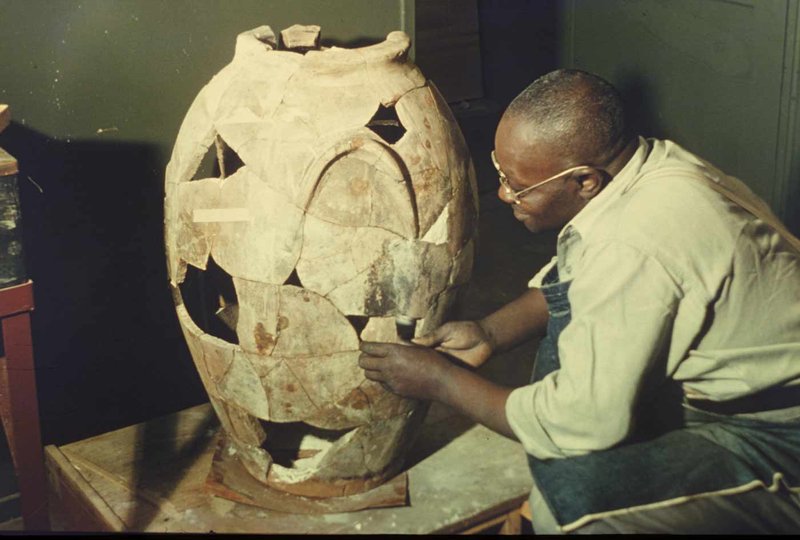
Sandy Morse transitioned from field work to the archaeological lab in 1954. (Visual Resources Collection, John D. Rockefeller Jr. Library, Colonial Williamsburg)
Sandy Morse found his niche in the lab. Hired as a laborer in 1947, by late 1954 Morse was working with artifacts: numbering ceramics, and mending vessels. It is his handwriting that keeps us straight when working with early ceramics collections. Morse indexed office collections of creamware and delftware and built stands for display cases. In 1955 he was given the title “Junior Archaeological Treatment Assistant,” a position he retained until his retirement in 1960.
These stories are just a sampling of those we have uncovered. To date, the names of more than two dozen Black excavators, hired before 1965, have been identified. Although some continued to work on archaeological sites beyond the mid-1960s, many of the experienced, self-taught men occupying excavator positions found themselves squeezed out by the increasing professionalization of a new discipline called Historical Archaeology. College students began to fill the role of “summer hires,” and when men like Daniel Louden retired, they were replaced by candidates with academic credentials. Although Historical Archaeology has taken exciting directions since its inception in the early 1960s, the loss of experience embodied by our predecessors is profound.
Where do we take the story from here?
The goal of this initiative—to identify excavators by name and to acknowledge their contributions—has shifted over the last several months. Instead of asking “who are these men?”, a better question for this moment seems to be “who are these men to us?” Where do they fit into our archaeological origin story? Do we call them archaeologists?
Colonial Williamsburg’s archaeologists often distinguish trenching (1928-1957) from “real” Archaeology (1958-present). These practices are, indeed, different. But in defending the distinction, this approach simultaneously dismisses individuals engaged in that work. The terms “laborer,” “day laborer,” and “unskilled labor,” have been thoughtlessly applied to early excavators in written histories of Williamsburg’s archaeological program suggesting lack of investment, skill, or care.
Of course, this is not true.
The interview with Linwood Williams reveals that he was skilled in differentiating not just the forms, but various functions, of outbuildings. And half a century later, Williams was still pondering indicators that made it possible to distinguish male skeletons from female in the Palace cemetery. These are not the marks of a disinterested man. There is also evidence in interviews and images that the careless techniques we ascribe to early excavation are unfair. Trowels and brushes are described alongside the more aggressive shovels and picks that we typically associate with trenching, and there is ample evidence of the use of screens to recover artifacts. Trenching may have gotten a bad rap, but “trenchers,” even more so.
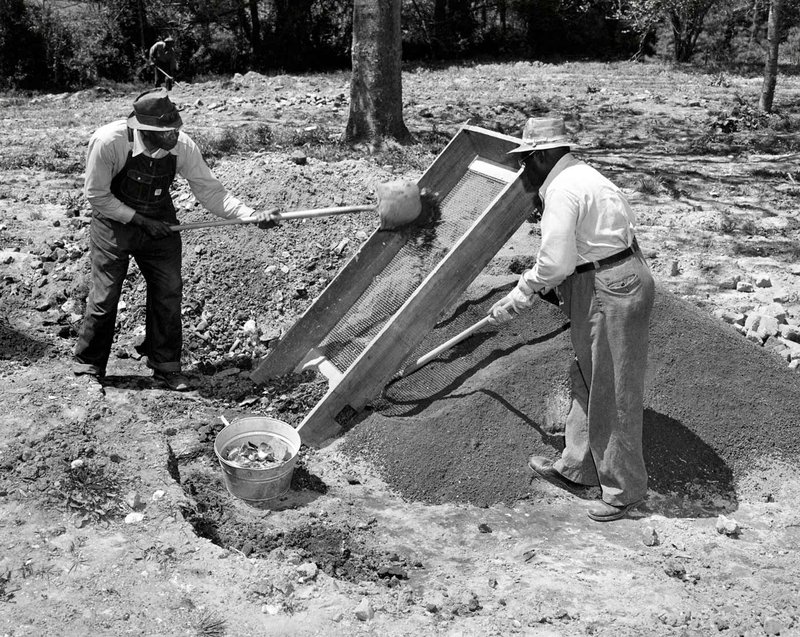
Lucien Graves and Sandy Morse use a screen to recover artifacts at the Ravenscroft Site in 1954. (Visual Resources Collection, John D. Rockefeller Jr. Library, Colonial Williamsburg)
These are men who moved the archaeological ball forward. Before archaeology had even been assigned a role in exploring “modern” sites—while the rules were still being written—Colonial Williamsburg’s Black excavators were amassing the evidence on which we continue to build. By the time Historical Archaeology emerged as its own field of study, these men had recovered (and reconstructed) hundreds of buildings and collected thousands of artifacts.
Did they consider themselves archaeologists? It is hard to know. The earliest excavations in Williamsburg fell between the discovery of King Tut’s tomb in 1922 and news in 1939 that a Viking Ship had been found in the English countryside at Sutton Hoo. Notable archaeological discoveries must have seemed far from Tidewater Virginia. And yet patrons of a Duke of Gloucester Street garage were instructed to “Toot-an-Cum-In.” Did Linwood Williams consider himself an insider to that joke?
It has taken far too long to recognize that the discipline of Historical Archaeology began with the work of Black excavators who were archaeologists. The names of some, we know already. Others, we still need to find. Perhaps they are on your family tree.
It is time to recognize everyone who has played a role in building this extraordinary—but still unfinished—place.
Explore More Moments in History
History unfolds one day at a time. And every moment from our past tells a story. How did ordinary people navigate a world of colonialism, slavery, and revolution? How did colonists come to defy the social order? How did they build a new one? Dig into these stories to learn more.
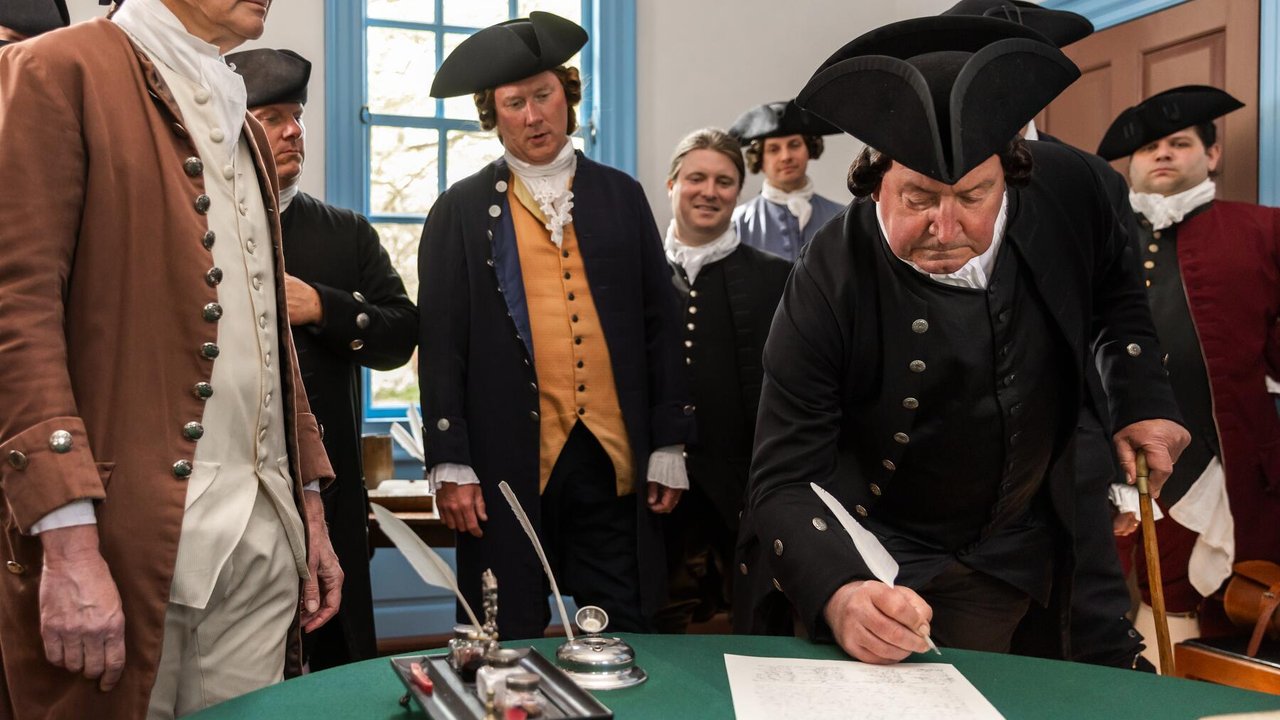
Sources
- Noel Hume, Ivor “When Tut Went Phut; or, The Day Mr. Junior Changed His Mind” Colonial Williamsburg Journal, Spring 2002.
